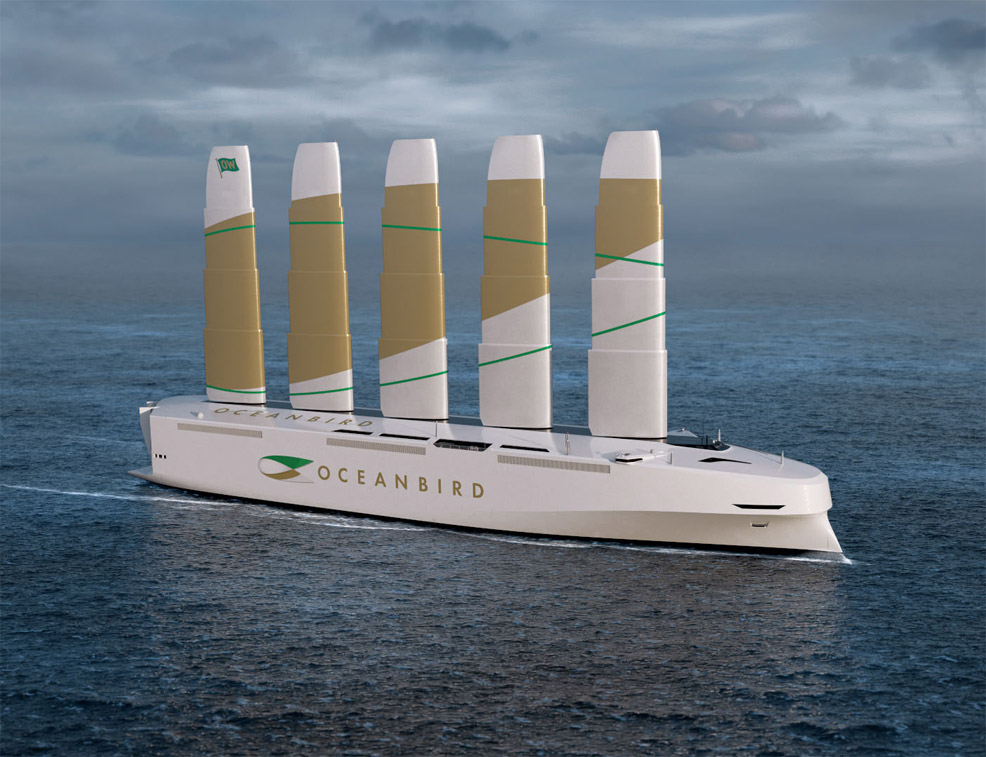
19th November 2020 Wind-powered, transatlantic car carrier planned for 2024 In the near future, large vessels carrying vehicles or other cargo across the ocean could be powered by wind, thanks to innovative sail technology. Oceanbird, designed by Swedish engineering company, Wallenius Marine, is a futuristic concept for a PCTC (Pure Car and Truck Carrier) with capacity to carry 7,000 cars on long-distance ocean journeys. The project aims to prove that the global shipping community can transport goods in a sustainable way, and that low or zero-emission shipping is possible by using wind as the main energy source. "We are proud to present our third iteration of our design, which we have worked with for several years," said Per Tunell, COO of Wallenius Marine. "Shipping is a central function in global trade and stands for 90% of all transported goods, but it also contributes to emissions. It is critical that shipping becomes sustainable. Our studies show that wind is the most interesting energy source for ocean transports and with the 80-metre-high wing sails on Oceanbird, we are developing the ocean-going freighters of the future."
Maritime transport already emits 940 million tonnes of CO2 each year and is responsible for 2.5% of worldwide greenhouse gas (GHG) emissions. At current growth rates, this amount could triple by 2050. In April 2018, the International Maritime Organisation (IMO) adopted a long-term strategy on the reduction of GHG emissions from ships. The goal is to cut total annual GHG emissions by at least 50% by 2050, compared to 2008, while pursuing efforts towards phasing them out entirely. Oceanbird is a collaborative project between Wallenius Marine, Sweden's Royal Institute of Technology (KTH), and SSPA Sweden, a consulting company that provides services in ship design and maritime operations. The Swedish Transport Administration is acting as a co-financier. KTH is addressing the challenges within areas such as aerodynamics, sailing mechanics and performance analysis. SSPA is contributing with expertise in the development and validation of new testing methods, aerodynamic and hydrodynamic simulation, and risk simulation. "The development project has come very far," said Richard Jeppsson, the company's VP of Commercial & Partnership. "We have started testing with 7 metre models in open water recently and will continue this fall. The design will be ready for orders in 2021, and we are aiming for a possible launch in 2024." If built and put into service, the full-sized Oceanbird will be 200 metres in length and 40 metres wide. The five wing sails are all 80 metres tall, giving the ship a total height above the water line of 105 metres. This would make it the tallest ship ever to cross the oceans. The sails are retractable and telescopic, as seen in the video below, and able to rotate 360 degrees. If the project is successful, the combined expertise of Wallenius Marine, KTH, and SSPA will be used to develop sustainable transport methods for other ship classes. "Our design features a unique combination, where the hull and rigs work together as one unit and has been specifically optimised for sailing the oceans," explained Carl-Johan Söder, PhD, a naval architect at Wallenius Marine. "With our configuration, the vessel will have an average speed of 10 knots on a typical Atlantic crossing. A North Atlantic crossing with Oceanbird will therefore take around 12 days, compared to eight days for conventional vessels."
--- Follow us: Twitter | Facebook | Instagram | YouTube
Comments »
If you enjoyed this article, please consider sharing it:
|







